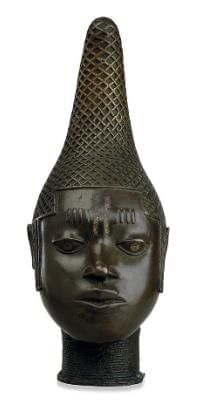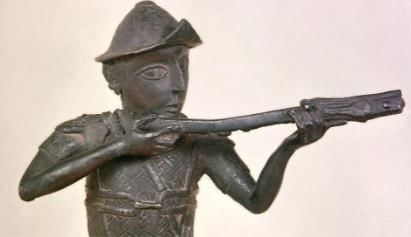What can we learn from the art of Benin? | History for Year 6 PDF Download
| Table of contents |

|
| What was art in Benin like? |

|
| What materials did craft workers use? |

|
| How were Europeans shown in art? |

|
| What should be done with Benin’s art? |

|
What was art in Benin like?
- The people of Benin created a diverse range of art. Village craft workers produced simple items like pots, weapons, and tools. They also carved ceremonial masks and sculpted gods from mud.
- In Benin City, artisans were organized into guilds, including those for wood carvers, ivory carvers, leather workers, weavers, and blacksmiths.
- The brass casters’ guild worked exclusively for the Oba, the king. Benin’s art depicted people, animals, and gods, reflecting the kingdom’s life and religious beliefs.
- Animals like crocodiles and leopards frequently appeared as symbols of the Oba’s power.
What materials did craft workers use?
Craft workers utilized various materials:
- Clay: Used for pottery and sculptures.
- Wood: Carved into masks and figures.
- Leather: Crafted into goods by leather workers.
- Plant fibers: Woven into colorful cloth by weavers.
 A statue made from brass, showing Queen Idia wearing a coral headdress
A statue made from brass, showing Queen Idia wearing a coral headdress
The most valued materials, believed to possess special powers, were:
- Brass: Thought to repel evil, it was reserved for the royal court, used for plaques on palace walls and figures or heads for royal altars.
- Coral: Considered a gift from Olokun, the sea god, it was worn as necklaces, bracelets, and anklets by chiefs, but only the Oba could wear full coral attire.
- Ivory: A symbol of purity and strength, it was carved into tusks placed near the Oba’s throne and crafted into bracelets and pendants for the Oba and key chiefs.
Metalworkers created intricate plaques, masks, and statues for the Oba, often referred to as “Benin Bronzes,” though most were made of brass, not bronze.
How were Europeans shown in art?
Benin artisans frequently depicted Europeans in their work, portraying them with long, narrow faces and straight, shoulder-length hair. Some figures were depicted with beards or wearing armor and holding guns. Despite their unfamiliar appearance, Europeans were initially welcomed in Benin. The Obas maintained positive trade relations with European merchants until the 1800s, when European attitudes shifted. Instead of trading, Europeans sought to conquer African kingdoms. By the late 1800s, European nations competed to seize African territories, building their empires.
 This 16th century brass statue shows a soldier. Europeans in Benin art were often shown holding a gun.
This 16th century brass statue shows a soldier. Europeans in Benin art were often shown holding a gun.
What should be done with Benin’s art?
There is increasing demand from Nigerians for the return of Benin artefacts held in museums worldwide. The Benin Bronzes were looted during the British invasion of Benin City in 1897, when it became part of the British Empire. In 2021, Germany committed to returning artefacts taken from Benin, and the University of Aberdeen repatriated a bronze to its homeland. Many museums still hold numerous Benin artworks, which remain significant to modern African communities. Campaigns continue to advocate for their return to Nigeria.
|
3 videos|69 docs
|
FAQs on What can we learn from the art of Benin? - History for Year 6
| 1. What was art in Benin like? |  |
| 2. What materials did craft workers use in Benin art? |  |
| 3. How were Europeans depicted in Benin art? |  |
| 4. What should be done with Benin’s art today? |  |
| 5. What can we learn from the art of Benin? |  |




















